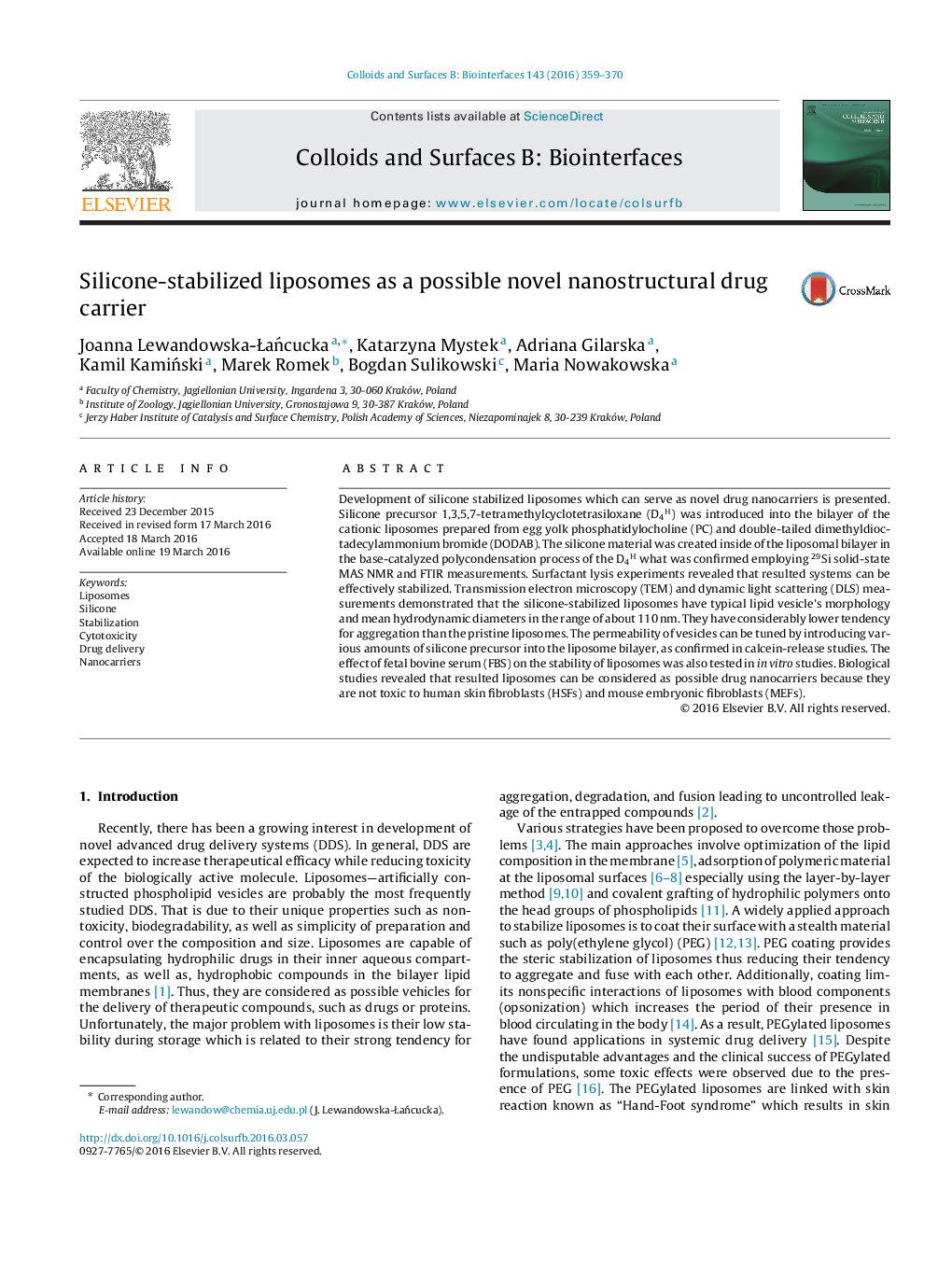| کد مقاله | کد نشریه | سال انتشار | مقاله انگلیسی | نسخه تمام متن |
|---|---|---|---|---|
| 599058 | 1454261 | 2016 | 12 صفحه PDF | دانلود رایگان |
• Novel silicone-stabilized liposomes were obtained and characterized.
• The silicone material was prepared inside the liposomal bilayer from D4H.
• Developed nanocarriers are stable and have sizes in the range of 110 nm.
• In vitro studies show that developed nanocarriers are not toxic to HSFs and MEFs.
• Obtained systems can serve as novel, stable and biocompatible drug nanocarriers.
Development of silicone stabilized liposomes which can serve as novel drug nanocarriers is presented. Silicone precursor 1,3,5,7-tetramethylcyclotetrasiloxane (D4H) was introduced into the bilayer of the cationic liposomes prepared from egg yolk phosphatidylocholine (PC) and double-tailed dimethyldioctadecylammonium bromide (DODAB). The silicone material was created inside of the liposomal bilayer in the base-catalyzed polycondensation process of the D4H what was confirmed employing 29Si solid-state MAS NMR and FTIR measurements. Surfactant lysis experiments revealed that resulted systems can be effectively stabilized. Transmission electron microscopy (TEM) and dynamic light scattering (DLS) measurements demonstrated that the silicone-stabilized liposomes have typical lipid vesicle’s morphology and mean hydrodynamic diameters in the range of about 110 nm. They have considerably lower tendency for aggregation than the pristine liposomes. The permeability of vesicles can be tuned by introducing various amounts of silicone precursor into the liposome bilayer, as confirmed in calcein-release studies. The effect of fetal bovine serum (FBS) on the stability of liposomes was also tested in in vitro studies. Biological studies revealed that resulted liposomes can be considered as possible drug nanocarriers because they are not toxic to human skin fibroblasts (HSFs) and mouse embryonic fibroblasts (MEFs).
Figure optionsDownload as PowerPoint slide
Journal: Colloids and Surfaces B: Biointerfaces - Volume 143, 1 July 2016, Pages 359–370
